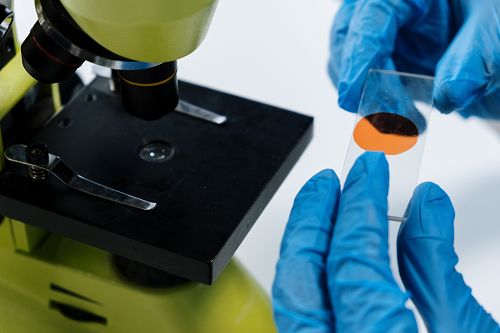Performing Effective Literature Search – For EU MDR and Other Regions
For any medical device, there must be sufficient clinical evidence to corroborate compliance with relevant essential requirements for safety and performance.
One of the most crucial components for a thorough and complete Clinical Evaluation is a comprehensive and systematic literature search which is performed to identify suitable clinical data that is not available from the manufacturer.

Why are literature searches important?
The literature search has two-fold importance. Not only does it establish the safety and performance of the device, but it also includes a review of the current knowledge and/or state-of-the-art (SOA).
Together, these two sections integrate into the complementary aspects of a Clinical Evaluation Report (CER), such as clinical data, worldwide post-market surveillance, and risk assessments, to conclude the clinical safety and performance of the device.
Sometimes, when the data from the manufacturer is insufficient, clinical data from the scientific literature of equivalent/similar devices will represent a major part of clinical evidence. Furthermore, for smaller manufacturers or manufacturers of Class I medical devices, the literature will be almost, if not all, of their clinical data.
Only after a series of stringent checks to assess its appropriateness, the appraised clinical data set identified is included in the clinical evaluation. Sales literature, with comparative information and pictures, can also assist in initial, comparative product evaluations.
Note that literature search and literature review are used interchangeably in this article. While not the same thing, for a clinical evaluation report they can be considered equivalent, as they are both an integral part of the process.
Essential elements of the literature review

Literature search protocol
The literature search protocol should include the sources of data, the methodology planned for each search, and the exact search terms and parameters used.
It is important to determine the selection criteria to be applied to published literature and document the justification for these choices, along with strategies for addressing potential duplication of data from multiple sources.
Data management practices
Manufacturers must also define data management practices such as quality control and the second review of extracted data by additional reviewers to ensure data integrity.
The rationale for an appraisal plan consisting of methods for appraisal of each of the data sources used and its relevance to their device must be provided. The literature search review report should also cover the analysis plan defining the methods for analyzing the data, such as data processing and transformation.
State-of-the-art
To determine the current SOA, manufacturers must refer to applicable standards and guidance documents in the corresponding medical device field. The use of information relating to the medical condition managed with the device, benchmark devices, and medical alternatives available to the target population would help in this regard.
Conducting a literature search, though, is fairly complex, with the current guidelines requiring that the search strategy be thorough, objective, reproducible, documented, and justified. Here, the use of trained literature search engines that optimize search results and result in significant time reduction for the manufacturer could prove extremely beneficial.
Formulating the right research question
Perhaps the most critical part of planning your literature search and review is to formulate appropriate research questions.
If your research question or hypothesis is not focused and clear you will end up with results that are too broad or too narrow in scope, too much or too little literature, and literature that is not relevant to the research question.
You also want a research question that allows for the appropriate level of research and analysis on your chosen topic.
PICO method
It can be helpful to formulate the research question using the PICO methodology (P- Population, I- Intervention, C- Control or Comparison, O- Outcome). The PICO method is also one of the most common methodologies applied to the literature search. Choosing your research question with the PICO method in mind lets you directly transfer your question to your literature search strategy.
Other examples of Literature Search and review methods are PRISMA statement, MOOSE proposal, SPICE, PEO, and ECLIPSE, which are also available.
Literature search and review plan

Before the execution of the search itself, you should develop a literature search protocol that scopes out the plan, helps clarify possible issues and aligns with current guidelines.
The literature search protocol should include several elements.
Scope of the literature search and review
The scope of the literature search and review should reflect what kind of clinical data the search should cover.
The literature search should always include two categories of clinical data:
- Clinical data on the device in question, as well as similar or equivalent devices
- Data on the current state-of-the-art/knowledge related directly to the device and/or its equivalents, any available medical alternatives, as well as benchmark devices and technologies
The included literature should always reflect the intended use of the device and its clinical benefits.
Inclusion/exclusion criteria
To only include relevant and applicable literature in your literature review, you need to define which literature should be included and which should be excluded.
Common inclusion and exclusion criteria are:
- Language
- Date of publication
- Geographic location
- Study design (systematic reviews, meta-analyses, controlled trials, etc.)
- Type of publication
- Participants
- Peer-review
Keywords
You also want to make sure your literature search and review plan includes the right keywords and phrases relevant to the topic. To identify keywords, it is important to be conscious of the writing style and keywords of the different scientific publications.
You could also brainstorm a keyword map with words and phrases relevant to your device. Make sure to include alternate spellings, synonyms, and any other words related to your research.
Systematic review
The literature search protocol should demonstrate that your literature search is a systematic review of relevant literature, both favorable and unfavorable.
The literature search itself should be well-documented and detailed, which the search protocol should also reflect. It is important to thoroughly document your search process, search methods, key words, and relevant databases to ensure the search is repeatable and properly conducted.
It is extremely critical that manufacturers develop a robust literature search strategy that can be easily replicated and validated during subsequent updates to their CER
Identify the suitable databases
The source of the literature search database, such as scientific databases, internet searches, non-published data, and citations, determines the quality of data presented.
Scientific databases
Scientific online databases such as Pubmed, Cochrane central trial register, EMBASE, PDQ evidence, Trip, and CINAHL are commonly used for literature searches. Google Scholar, the manufacturer’s website, FDA, Cochrane database of systematic review, etc. are typically used for internet searches.
Often, non-published data is collated from instructions for use, implant registries information, etc.
Non-obvious sources
Don’t overlook sources that might not be obvious, but can still provide useful information. These sources can be literature-related, such as conference papers, ongoing research at universities, grey literature, and databases of pre-print publications. They can also be alternatives to actual literature, such as online discussion forums, graduate and postdoctoral theses, or clinical trial registries.
Perform systematic literature screenings
Once you have your carefully chosen research question and keywords, you can begin to search and screen your data.
Refining search results
This can be done using approaches like Boolean search strategy and/or the use of Medical Subject Headings (MeSH) terms, you can get good results. The application of filters also helps to refine search results to meet expected criteria.
The search results are screened on at least two levels to assess relevance – title or abstract screening, based on inclusion and exclusion criteria, and a full-text screening of the included articles.
It is critical to determine if the data found is valid and relevant for the medical device under evaluation. MEDDEV guidelines contain seven pages of guidance for evaluating the consistency of methodological quality and scientific validity of data sets.
Source reliability
Another part of screening literature is to assess the quality of the source, as well as the relevance, applicability, and quality of the literature itself. When and where was it published, does the author have good credentials, is the article published in a peer-reviewed journal or has in another way been peer-reviewed, is it bias-free, etc. These are all excellent questions to ask before including the literature in your clinical evaluation, as you do not want to base your clinical evaluation on less than credible sources and research.
Review your initial research question
Reviewing the initial research question after the literature search has been completed is often overlooked.
However, it makes good sense to go back to your research question to check if it needs to be revised or if it is still valid and relevant.
Most papers will include a section at the end about suggested future research or further research to be done on the topic, which is a good place to start to check your research question and whether it can be focused to address the topic in a more appropriate way.
Prepare the literature search review report

This report presents results of the search which address aspects like safety, performance, benefits to the patient, side-effects, adverse reactions, state of the art, etc. Using search results that pass screening, literature review reports are formed for each of the review questions.
Our thoughts
A successful literature search, like every research endeavor, must have clearly defined protocols and effective and timely planning well before the searches are initiated.
Not only are the analytical methods and time frames important, but also the evaluation methodologies used to collect the data, and the specialized skill to determine its scientific merit.
Device equivalence
The literature search related to device equivalence should be treated and managed as a separate activity from the search of the current state of the art.
Protocol testing
It is necessary to test the protocol for the search before finalizing. For example, after identifying known papers and comparative sales literature relevant to the device being evaluated or the current state of the art, it is still necessary to test these search parameters to ensure that references to these known papers and sales literature appear in your search results.
To conclude, we must ensure that our literature search is extremely thorough and consistent, encompassing a breadth of search criteria. We must document every piece in detail, allowing independent verification and replication of results selecting literature objectively ensuring that the good, bad and justifiable are all included. Since every published study and even sales literature can be cited, these may lead to additional relevant data and perspectives.

At this final juncture, proper planning and staying within your device search parameters becomes crucial. It is too easy to quickly wander down a virtual rabbit hole and find it nearly impossible to retrace your path without wasting significant amounts of time.
Thanks for reading! If you have any more questions on Literature Search or CER, reach out to the CiteMed team today at: info@citemedical.com – https://citemedical.com
